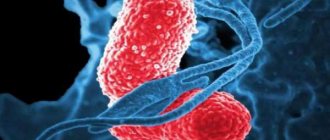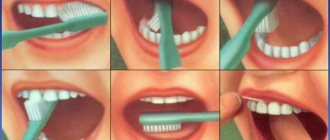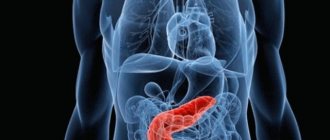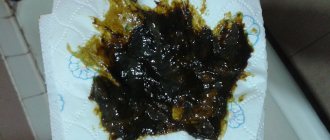Red feces in children and adults: why does it occur?
The normal color of stool formed in the intestines of a healthy person is from light brown to dark brown.
This shade is due to the presence of bile pigments in them (primarily bilirubin), which give them their typical brown color. This happens normally, but in some cases the stool may be of other colors, for example, sometimes there is red stool. What could this mean, and why does the stool take on this color? There are several reasons for this.
The color of human feces depends on the influence of many factors, including the daily diet, the use of medications, and the functioning of the gastrointestinal tract.
In a healthy person, feces are colored in different shades of brown, since bile produced by liver cells and entering the intestines, under the influence of bacterial flora, is converted first into bilirubin, and then into the bile pigment stercobilin, which gives human feces a brown color.
This is evidence that the human gastrointestinal tract is functioning normally.
Any deviations from this physiological norm are grounds for contacting a qualified specialist and undergoing a thorough medical examination. Red color of stool, especially accompanied by a significant deterioration in general health, is no exception to this rule.
- 1 Reasons for appearance
- 2 Manifestations in young children
- 3 Streaks in the stool of a baby 3.1 For what signs should the baby be shown to a doctor?
Yellow stool due to diarrhea
If your stool is yellow during short-term diarrhea, you should not worry too much. But prolonged diarrhea with such a tinge of feces poses a serious threat to the health of an adult. It can cause:
- dehydration of the body;
- exhaustion;
- hypovitaminosis.
The presence of liquid yellow stool indicates the possibility of developing the following pathological conditions: hepatitis, colitis, gastritis, dysbacteriosis, liver cirrhosis, peptic ulcer.
What determines the color of stool
Any changes in the normal brown color may be completely natural or the result of pathology. When a person who discovers that his stool has changed color goes to see a doctor, the doctor will first find out what kind of food the patient eats. This is very important, because the color of stool is given not only by bile, but also by the products that make up the dishes. If a person has eaten too much food colored with red pigments, the stool will be the same color.
For example, pink or red stool may appear after eating:
- tomatoes;
- red-colored fruits or berries (blueberries, raspberries, red apples, cranberries, currants);
- beets;
- red drinks (wine, juices, carbonated drinks).
In this case, there is nothing to worry about - this situation is quite normal and the color of the stool will be restored as soon as the food changes. The fact that everything is in order should also be indicated by the person’s good health.
Feces are a product of food processing in the body and are formed after the latter passes through the digestive tract. On this path, nutrients are absorbed, which become available after complex digestive processing, mainly in the stomach and intestines. This process produces non-metabolizable waste that forms feces.
Physiologically, they are brown in color, since bile entering the intestines from the liver is metabolized by bacterial flora and turns into bilirubin, and then into stercobilin, which gives the stool a brown color.
The act of defecation
Each organism is characterized by an individual frequency of bowel movements. Normally, this is from three times a day to three bowel movements a week. Ideally - once a day. Many factors affect our intestinal motility, and this should not be a cause for concern. Travel, nervous tension, diet, taking certain medications, illness, surgery, childbirth, physical activity, sleep, hormonal changes - all this can be reflected in our stool. It is worth paying attention to how the act of defecation occurs. If excessive efforts are made, this indicates certain problems in the body.
Symptoms accompanying the appearance of blood in the stool
If a person's stool becomes red, he may often experience other unpleasant symptoms, such as pain in the abdomen or anus, which occurs due to damage to the intestines. The intensity and duration of pain can vary - it all depends on the degree of injury to the intestinal walls. It may appear only during bowel movements or last for quite a long time after it.
Also with anal bleeding there may be:
- lightheadedness and vomiting, indicating that blood has begun to flow in the upper gastrointestinal tract;
- cramps and diarrhea are signs of problems with the lower regions.
If blood appears frequently, then weakness, dizziness and general malaise are quite common symptoms that accompany bleeding. They appear as a result of anemia
- Red or red-brown stool is not always a cause for concern, as it may be the result of eating a meal containing a significant amount of tomatoes or beets, or drinking fruit punch or a drink with a high content of red food coloring the previous day.
- If your diet did not include red foods, bloody stools may indicate the presence of hemorrhoids or anal fissures (also called anal fissures). The culprits for their occurrence may be:
- childbirth;
- frequent constipation;
- hard physical labor;
- anal sex;
- sedentary lifestyle or specific working conditions;
- foreign object in the anal canal;
- improperly performed enemas;
- injuries received during a medical examination;
- infectious intestinal diseases;
- worms (the most common cause of anal fissures in children);
- injuries or damage that affected the structure of the mucous membrane of the anal canal.
- Stool may turn red due to bleeding from ulcers in the intestines caused by long-term use of certain antibiotics. The presence of blood in the stool is often observed after taking potassium supplements and a number of other medications.
- Red feces are often observed in patients suffering from intestinal inflammation. Characteristic clinical manifestations of this disease - along with red stools - are also painful cramps and painful diarrhea.
- In some cases, blood in the stool is the only clinical manifestation of colon cancer. The same symptom may indicate the presence of polyps (both benign and malignant) in the colon.
- The color of stool (bright red or dark red) may indicate in which part of the gastrointestinal tract the pathology that disrupts the functioning of the affected organ is localized. Thus, the bright red color of stool is most likely a harbinger of a disease that affects the lower intestines. One of the most common pathologies that interfere with the normal functioning of the large intestine is diverticulitis, a disease in which an existing infection provokes inflammation of small areas of the rectum. This condition is accompanied by acute pain in the lower abdomen. Stools colored dark red usually indicate a pathology localized in the upper part of the digestive tract:
- in the esophageal tube;
- in the stomach;
- in the small intestine.
Red stool may also indicate the presence of:
- intestinal infection;
- inflammatory foci in the small and large intestine;
- parasitic worms in the intestines.
In all these cases, along with bloody stools, the patient experiences:
- attacks of nausea;
- vomit;
- general weakness;
- painful spasms;
- diarrhea;
- significant reduction in body weight.
The symptoms that accompany a change in stool color usually depend on the reasons that led to this situation.
There are many reasons, as we have seen. However, the most common are:
- Diarrhea. Reduces intestinal transit time and is accompanied by green stool.
- Stomach ache. May be associated with bleeding, which is most often accompanied by dark and tarry or red stool.
- Weakness, dizziness and shortness of breath. As a result of anemia, which develops as a result of intestinal bleeding.
- Jaundice. This is due to blockage of the bile ducts and thus the stool is greyish-white in color.
- Abdominal pain and flatulence. Associated with malabsorption problems and therefore yellow and greasy stool.
What should stool be like?
Normally, stool is considered normal if it has the consistency of toothpaste. It should be soft, brown, 10-20 cm long. Defecation should occur without much strain, easily. Small deviations from this description should not immediately cause alarm. Stool (or feces) can change depending on lifestyle and dietary errors. Beets give the output a red color, and fatty foods make the stool foul-smelling, too soft and floating. You need to be able to independently evaluate all the characteristics (shape, color, consistency, buoyancy), let's talk about this in more detail.
Types of stool vary in color. It can be brown (healthy color), red, green, yellow, white, black:
- Red color. This color may result from ingesting food coloring or beets. In other cases, the stool becomes red due to bleeding in the lower intestine. Everyone's biggest fear is cancer, but this can often be associated with diverticulitis or hemorrhoids.
- Green color. A sign of the presence of bile. Stool moving too quickly through the intestines does not have time to turn brown. A green tint is a consequence of taking iron supplements or antibiotics, eating large amounts of greens rich in chlorophyll, or supplements such as wheatgrass, chlorella, spirulina. Dangerous causes of green stool are Crohn's disease, celiac disease, or irritable bowel syndrome.
- Yellow. Yellow feces are a sign of infection. This also indicates gallbladder dysfunction, when there is not enough bile and excess fat appears.
- White stool is a sign of diseases such as hepatitis, bacterial infection, cirrhosis, pancreatitis, and cancer. The cause may be gallstones. Stool does not stain due to bile obstruction. The white color of feces can be considered harmless if the day before you took barium before an x-ray examination.
- Black or dark green indicates possible bleeding in the upper intestine. A sign is considered harmless if it is a consequence of consuming certain foods (lots of meat, dark vegetables) or iron.
Pathological causes
However, red stool can be caused not only by food. This can happen after using synthetic vitamin supplements with retinol, drugs containing potassium or iron, and some antibiotics. The latter can cause intestinal ulcers and bleeding as a side effect of their use. To make sure that the cause is the medications, you need to stop them. If after some time the color is restored, it means that they were the factor in its change.
Often the culprits of red stool are diseases of the gastrointestinal tract, especially the intestines (constipation, hemorrhoids). The stool becomes red due to the presence of blood that flows from damaged vessels in the anus.
Reddish feces in an adult can be the result of problems in the upper and lower gastrointestinal tract, for example, such as:
- disruptions in the functioning of the large intestine;
- infectious inflammation (diverticulitis);
- neoplasms and polyps in the intestines;
- anal fissures;
- intestinal obstruction;
- helminthiases;
- stomach or duodenal ulcer;
- gastritis;
- colitis;
- intestinal tuberculosis;
- dysbacteriosis;
- herpes intestinal infection;
- varicose veins;
- cirrhosis of the liver.
Blood may appear in the intestines due to injury during anal intercourse, and in women, bleeding may occur after childbirth.
Photo
We described above how beets affect the feces of adults and children, now we will see this more clearly in the photo.
When to see a doctor
Red stool is not always a reason to see a doctor. If you notice that this happened after eating food colored with red dyes of natural or artificial origin, then there is no need to worry. It is enough to exclude red-colored foods from your diet, and, most likely, your feces will soon become normal.
Also, do not worry if blood appears in the stool only once. This may be the result of constipation caused by eating fiber-rich foods. In this case, you need to exclude such foods and drink more water. Within a short time, constipation should go away, the movement of feces should normalize, and their color should return to typical.
You need to visit a doctor if:
- changes in stool color are not isolated, but recur periodically;
- The stool turns red all the time.
This very often indicates pathology of various origins, so this should be dealt with by a qualified doctor. Only he will be able to correctly diagnose and select the necessary and most effective treatment.
As we have seen, a change in the physiological color of feces is not always a disease; indeed, in many cases, there is a nutritional problem, without any consequences. However, this symptom should not be ignored in any case, because it may indicate serious illnesses.
You should consult your doctor immediately if:
- Changes in stool color are permanent.
- Changes in stool color recur periodically, after periods of stagnation.
Form
The shape of your stool can also tell you a lot about your internal health. Thin stool (resembling a pencil) should alert you. Perhaps some kind of obstruction is blocking the passage in the lower part of the intestine or there is pressure from the outside on the colon. This could be some kind of neoplasm. In this case, it is necessary to perform a colonoscopy to exclude a diagnosis such as cancer.
Hard and small feces indicate the presence of constipation. The cause may be an inadequate diet that excludes fiber. You need to eat foods high in fiber, do physical exercise, take flaxseed or psyllium husk - all this helps improve intestinal motility and make stools easier.
Stool that is too soft and clings to the toilet contains too much oil. This indicates that the body does not absorb it well. You may even notice oil droplets floating. In this case, it is necessary to check the condition of the pancreas.
In small doses, mucus in the stool is normal. But if there is too much of it, it may indicate the presence of ulcerative colitis or Crohn's disease.
Diagnosis of the causes of changes in stool color
Diagnosing the causes of changes in the color of feces is often a long and complex process.
It assumes:
- Anamnestic analysis.
- Analysis of symptoms and signs.
- Physical examination of the patient.
- Blood tests, in particular, a complete blood count (to rule out anemia), liver function tests, and pancreatic enzyme levels.
- Test for occult blood in the stool to find out if there is any bleeding.
- Esophagogastroduodenoscopy. Clinical examination using an endoscope allows you to examine the esophagus, stomach and duodenum from the inside.
- Colonoscopy. Using an endoscope can reveal polyps, injuries or tumors inside the colon.
- Sometimes a CT scan or MRI may be needed to confirm the diagnosis of a tumor lesion.
Given the heterogeneity of the reasons that determine the color of stool, it is impossible to indicate a single remedy for the situation: therefore, first of all, we must determine the disease or habit that causes changes in the color of stool.
Diagnosing the reasons why changes in the normal color of stool occur is a rather long and complex process. The doctor may order several diagnostic tests to determine exactly what caused the discolouration of the patient's stool.
To do this, they perform a rectal examination of the patient, and then prescribe blood and stool tests and diagnostic procedures, for example, such as:
- esophagogastroduodenoscopy;
- colonoscopy;
- study of the functioning of the liver and pancreas;
- CT or MRI if there is a suspicion that blood in the stool is caused by a tumor localized in the gastrointestinal tract.
After diagnosing and determining the diagnosis, treatment is prescribed. To remove a symptom such as red stool, the disease that caused its appearance is treated.
Bristol scale
English doctors at the Royal Hospital in Bristol have developed a simple but unique scale that characterizes all the main types of feces. Its creation was the result of the fact that experts were faced with the problem that people are reluctant to open up about this topic; embarrassment prevents them from talking in detail about their stool. Based on the developed drawings, it became very easy to independently characterize your own bowel movements without any embarrassment or awkwardness. Currently, the Bristol Stool Shape Scale is used throughout the world to assess the functioning of the digestive system. For many, printing a table (types of feces) on the wall in your own toilet is nothing more than a way to monitor your health.
Treatment of diseases
If blood in the stool occurs due to an anal fissure or hemorrhoids, the patient is prescribed medications and a special diet to prevent further worsening of the pathology.
Drugs used:
- painkillers;
- healing;
- venotonic;
- anti-inflammatory;
- laxatives.
Intestinal infections are treated with antibacterial agents, after which medications are prescribed to replenish fluid loss during diarrhea, probiotics to restore intestinal microflora, and nutritional therapy.
Ulcerative colitis is treated with medications, but if such therapy is ineffective, surgery is performed. In the postoperative period, a strict diet is prescribed. Polyps and neoplasms in the gastrointestinal tract are removed surgically. In the future, the patient should undergo regular examinations in order to detect a relapse of the disease in time.
Causes of sticky stool in adults
Fatty stool can appear due to a number of factors. In most cases, diseases of the internal organs appear during diagnosis. External factors also play an important role, negatively affecting a person’s well-being and leading to the formation of sticky feces.
Physiological manifestations
Steatorrhea can be nutritional (food-related), when its development and progression is preceded by excessive consumption of fatty foods. Such products do not have time to be digested by the gastrointestinal tract, resulting in thick plasticine stools.
Pasty stool also appears due to long-term use of medications. These could be laxatives, medications aimed at combating obesity.
Pathological manifestations
Feces like plasticine in an adult manifest themselves as a result of the development of the following pathologies:
- liver diseases, which include cholangitis, cirrhosis, hepatitis in any form, cysts, neoplasms, Wilson's disease;
- malfunctions of the pancreas, for example, chronic or acute pancreatitis, cancer, narrowing of the Wirsung duct;
- intestinal lesions in the form of enteritis, Crohn's disease, Whipple's syndrome;
- disruption of the functioning of the gallbladder and its ducts, including damage by parasites;
- congenital pathologies;
- insufficient function of the endocrine glands.
Manifestations in young children
Red feces in children, unlike in adult patients, are quite common, and in the vast majority of cases it is not a clinical manifestation of any pathology.
- In babies under one year old, eating a banana can provoke redness of the stool; in this case, it does not matter who ate the fetus: the child himself or the mother feeding it with her breast.
- In older children, the cause of red stool may be the consumption of large amounts of candy and drinks containing large amounts of food coloring.
- Feces mixed with blood and pus are one of the characteristic clinical signs of dysentery, an acute bacterial intestinal infection that often affects children who like to feast on unwashed fruits and berries picked directly from the branches. This symptom requires immediate attention to an experienced pediatrician.
Why are there pieces of undigested vegetables?
High fiber content in the plant . When consumed in large quantities, beet fiber is partially not digested, and then pieces of the root vegetable may be present in the feces. If you feel normal and there is no discomfort, then the presence of pieces of beets in the stool is considered acceptable.- Intestinal disorders . Due to the laxative effect, eating beets in combination with spicy foods, large amounts of vegetables and fruits sometimes leads to diarrhea, incomplete digestion and the appearance of pieces of the plant in the excrement. This condition in isolated cases is not a pathology and goes away with hygiene and a reasonable combination of products.
- Disturbances in the digestive system . Large undigested parts of beets and other food in the feces, poor health and abnormal bowel movements for a long time signal problems in the body.
Stool after eating root vegetables in children and adults - what is the difference?
In young children, the digestive system is not developed and reacts more quickly to changes in diet. The younger the child, the more difficult it is for the child’s body to cope with excess amounts of beet fiber. When complementary foods are first introduced, beets are excreted in the feces almost unchanged. In older children, the stool after root vegetables becomes liquefied, turns shades of red and contains pieces of undigested vegetables.
As the child grows, more enzymes appear that help in the processing of beets , the food digestion system is fully formed, and the vegetable begins to be absorbed in large volumes.
On a note! In children, beets often affect not only the color of stool, but also turn the urine reddish. This is allowed if the child feels normal, and a change in red color occurs after removing the root vegetable from the diet.
Normal stool color
Red streaks in the stool of a baby are not always a sign of pathology, so before sounding the alarm, it is necessary to understand the reasons for their appearance as quickly as possible. Most often the culprits of their occurrence are:
- All kinds of mechanical impurities, mistakenly taken for traces of blood. In the process of sucking on their own clothes, blankets, and toys, babies often swallow microscopic fibers that fall out of them, which, undigested, are excreted from the body along with feces and look like streaks of blood.
- Various medications (for example, iron supplements and antibiotics) taken by the infant.
- Foods that can stain your baby's stool. In a baby whose diet consists exclusively of breast milk, staining of stool can be caused by a mother who feeds him with her breast and does not particularly adhere to a restrictive diet. Redness in a baby's stool can occur due to her eating vegetables and fruits that have a rich red color. The same effect is observed when eating a banana introduced into a baby’s diet as complementary food.
- Anal fissure. It is this reason that most often provokes the appearance of blood streaks in the feces of a child. An anal fissure can occur with frequent constipation, painful diarrhea, as well as with careless insertion of a gas tube, rectal suppository, or careless performance of an enema.
- Allergy to cow's milk protein (if you try to feed it to an infant). In response to drinking such milk, the baby's body may react with inflammation of the intestines, accompanied by severe ulceration of its mucous membranes. As a result, blood from bleeding ulcers ends up in the baby's feces.
- Enterocolitis of various etiologies. The characteristic manifestations of this disease are the presence of copious loose stools (containing streaks of blood) and severe abdominal pain. The baby, who experiences severe anxiety, often cries and sleeps very poorly.
- Violation of the integrity of a blood vessel located in the intestine. Streaks of blood in the stool can appear even if there is a very small hole.
- Volvulus is the most dangerous pathology observed in children under one year of age. Provoking severe pain, it causes the baby to constantly cry and refuse to eat. Blood clots that appear in his stool with this pathology resemble berry puree.
- All kinds of tumors (they can be both benign and malignant), most often represented by juvenile intestinal polyps, endowed with a tendency to bleed.
If the coloring of the baby's stool in red or the appearance of streaks of blood in it occurred as a result of the influence of completely harmless factors, you can correct the situation on your own, without resorting to medical help:
- To normalize the color of stool, it is enough to exclude foods that cause their coloring from the diet of the baby and nursing mother.
- Mechanical impurities that resemble streaks of blood can be eliminated from your baby’s stool by removing soft toys and fleecy fabrics from his crib.
- Anal fissures disappear on their own, and quite quickly.
An abundance of bright red blood may indicate problems in the lower parts of the large intestine (primarily the rectum), while dark blood may appear in the stool due to internal bleeding, the source of which may be a bleeding tumor.
Stools are usually brown in color, and significant changes in color may be a cause for health concern. The color of stool is determined by the presence of bilirubin (a breakdown product of hemoglobin) and other bile pigments. Changes in the amount of bilirubin in the bile can change the color of the stool from light yellow to dark brown.
In most cases, changes in the color of stool are associated with dietary habits and are not a symptom of any health abnormalities. However, in some cases, for example, if the color of the stool has changed radically, and these changes persist for a long time, this can be an important diagnostic sign of dangerous diseases and serious life-threatening conditions.
Feces can turn black in a completely healthy person in the following cases:
- When eating blueberries, prunes, pomegranates, black currants, bird cherry, red wine, red beets.
- After eating dishes and products based on or containing blood, for example, rare meat, blood sausage, etc.
- While taking iron supplements for the treatment of iron deficiency anemia, bismuth supplements, multivitamins, activated carbon.
In these cases, the help of doctors is not required, and the color of the stool returns to normal within a few days after changing the menu and stopping treatment.
Black stool is a symptom of dangerous bleeding in the upper gastrointestinal tract
The sudden and inexplicable appearance of black stool (melena) is one of the serious symptoms of internal bleeding into the cavity of the stomach or duodenum. The black color is due to the interaction of hemoglobin in the blood with hydrochloric acid in the gastric juice, resulting in the formation of black hemin. Bleeding can be caused by a peptic ulcer, tumor, injury, bleeding disorder, varicose veins of the esophagus due to liver disease, infectious process and other reasons.
If the appearance of melena is accompanied by weakness, cold sweat, increased breathing and pulse, and pale skin, you should immediately call an ambulance, since massive blood loss poses a serious threat to life.
Stool may turn black when blood is ingested during severe nosebleeds, after tooth extraction, or after oral trauma.
Black feces during pregnancy can be a consequence of all of the above conditions, but most often it is caused by a woman taking multivitamins and supplements containing iron.
Red stool appears when there is bleeding into the intestinal cavity.
There is no reason to worry if the day before you ate beetroot dishes or consumed drinks and confectionery products colored with red food coloring.
Among pathological conditions, the most common cause of red stool is bleeding from hemorrhoids. More dangerous causes of bleeding into the intestinal cavity and redness of the stool are Crohn's disease, ulcerative colitis, intestinal diverticulosis, malignant tumors, and arteriovenous malformations.
Severe bleeding in the upper gastrointestinal tract can also cause red stool. In this case, hemoglobin does not have time to react with hydrochloric acid, so the blood in the stool does not turn black, but remains red.
Yellow stool is one of the variants of light-colored stool, so the reasons for its appearance may be the same: diseases of the liver, biliary tract, pancreatic diseases, conditions accompanied by blockage or compression of the bile ducts, excessive consumption of fatty foods, treatment with certain medications.
Glad to see you on the Human Body channel! There have been very few likes lately and this is a shame for our team! We hope for your support in the form of likes and subscriptions to the channel!
Today we will talk about stool colors and the reasons for color changes.
How does eating a vegetable affect the color of stool?
Beets have a rich red-violet color due to the presence of special substances in their composition - betacyanins. The coloring pigments of the plant are processed and discolored when they enter the stomach, and further, passing through the internal organs and intestines.
In certain cases, the natural dyes in beets are not absorbed and the plant may stain feces. The effect of root vegetables on feces can be both within normal limits and due to possible health problems.
Natural causes of color changes
- Metabolism and absorption rate . With different levels of metabolism, the coloring pigments of beets are either completely broken down, then it does not color the secretions, or they do not have time to be partially processed, and are excreted along with the feces, coloring it in burgundy shades.
Individual abilities of the body to digest pigments . A certain percentage of people normally have a lack or absence of bacteria that break down the coloring pigments of beets. In this case, after eating the root vegetable, the stool is consistently colored in a beetroot shade, they are very similar to blood.- Volume of beets eaten . If the vegetable is consumed infrequently and in small quantities, the feces may remain unchanged. When the volume of beets in food increases, or daily consumption of dishes or juices from it, excess coloring substances will be excreted along with excrement (we talked about whether it is possible to eat a vegetable every day, what the consumption rate is and the dangers of exceeding it, we talked in our article).
How is it formed and what does it consist of?
From the stomach, food masses enter the duodenum, where they are mixed with bile produced by the liver and digestive enzymes of the pancreas. During the digestion of proteins, fats and carbohydrates, a suspension is formed that moves through the small intestine. The small intestine absorbs nutrients into the blood, and the remaining liquid waste enters the large intestine.
Normal stool consists of water, remains of animal food, undigested plant fibers, bacteria (up to 1/3 of the dry weight of stool), bile, and dead cells of the mucous membrane lining the digestive tract. The composition, consistency, quantity and color of feces depend on many factors and are one of the indicators of the health of the body in general and the gastrointestinal tract in particular.
Yellow feces - normal or a sign of disease
For some serious diseases of the liver and gallbladder, the lightening of excrement is an important sign for their diagnosis. Light-colored stool is a symptom of many diseases, but the most likely causes are problems with the gallbladder, biliary tract and liver. Tumors and inflammations in different parts of the digestive tract are less likely.
- Biliary dyskinesia. With this disease, the secretion of bile from the gallbladder becomes difficult due to a decrease in its contractility. Accordingly, bile enters the duodenum in smaller quantities, and the color of the stool becomes lighter.
- Bend of the gallbladder. This problem is accompanied by decreased motility of the gallbladder and ducts. As a result, the organ, important for good digestion, works less productively, bile acids are supplied to a minimum, causing a light color like an adult.
- Gallstones. The presence of stones changes the way the bladder produces and secretes bile. As in the previous case, the secretion of bile in humans decreases. Along with acute symptoms, light-colored stools appear.
- Blockage of the bile ducts. The delivery of bile from the gallbladder to the duodenum is partially or completely stopped.
- Cholecystitis. With cholecystitis, inflammation of the gallbladder occurs, which significantly reduces the amount of bile secreted.
- Hepatitis. This inflammatory liver disease significantly affects the quality of digestion, worsening the general condition of the body and the lightening of feces.
- Pancreatitis. Inflammation of the pancreas threatens the gastrointestinal tract with digestive problems, since this organ secretes important food enzymes.
- Crohn's disease. This is inflammation of any part of the gastrointestinal tract, which is characterized by a disorder of the digestive processes.
- Cancers of the gastrointestinal tract. Tumors and similar cancerous processes in the intestines can appear almost asymptomatically. Light-colored stool may be the only symptom that you can pay attention to.
- Infection with helminths. In this case, white particles and larvae can be observed in the feces. Their number depends on the degree of intestinal infection.
The color of feces is directly related to a person’s diet and is a true indicator of his health.
Quite often, adults do not even pay attention to the coloring of stool, unless this is accompanied by an increase in bowel movements or a change in consistency. And they do it in vain.
If you notice yellow feces in the toilet, then you should carefully look into the cause of such staining, because they can be completely harmless and quite serious.
Feces are always the first indicator of changes in the body, so a little control of excrement will avoid many serious disorders of the body. In order to understand why yellow feces can be the norm, you need to understand what the coloring of feces depends on.
In fact, 75 percent of what we see in the toilet is water. The remaining share is distributed between:
- Remaining fat.
- Bilirubin.
- Protein inclusions.
- Mineral salts.
- Leftover undigested food.
- Mucus, which is produced by the digestive organs.
- Bacteria.
Bile and bilirubin are the main coloring agents in stool that give it its brown color. But when the percentage of these components changes, yellow stool, orange feces or other shades appear.
Bilirubin is formed as a result of the breakdown of red blood cells, which is why it has such a rich pigment. Many organs take part in the process of formation of digestive waste, the work of each of which is very important.
This is why orange or yellowish stool may indicate a disease of a particular organ.
There are several coloring options without side processes in the body:
- The dark brown color may be the result of a rich, varied diet with many ingredients.
- Orange feces are formed as a result of eating large amounts of carrots and pumpkin. Orange stool can also appear during a vegetarian diet.
- Light yellow stool may appear when a person is on a dairy diet.
- Almost black excrement is formed when eating large quantities of meat products.
It is better not to ignore other changes or the appearance of stool with mucus, but to consult a doctor. It should be noted that yellow mucus in the stool of an adult most often appears due to poor functioning of the gallbladder, which means that the process of digesting food takes place with an insufficient amount of enzymes.
If you have practically ruled out the influence of food on the coloring of stool, then you need to become familiar with diseases that may be accompanied by a change in the color of stool in an adult. And this will allow you to quickly respond to the development of the disease and receive qualified help in the early stages of the disease.
In this case, the light yellow color of stool appears due to the fact that these organs do not produce the enzymes necessary for digestion. This prevents the body from absorbing nutrients from foods.
This can occur when liver cells are destroyed and stones form in the gall bladder. With this clinical picture, yellowing of the stool occurs, and the person begins to experience pain in the areas where the organs are located.
The pancreas takes an active part in the digestion process, so any disorders and diseases lead to bad consequences for the whole body. Light yellow stool can be an indicator that a person has pancreatitis, cystic fibrosis, or gland cancer.
This phenomenon can also accompany blockage of the ducts. Anything that prevents the gland enzymes from entering the stomach and maximally breaking down all food products leads to changes in the color of feces.
Sometimes you can even see foam in the toilet bowl, because there can be a lot of unprocessed fat left in the excrement.
Celiac disease
When asking why stool is light yellow in color, it is worth remembering that the foods we eat often contain gluten. Its high concentration is observed in barley, rye and wheat grains.
Excessive content of this substance in the body leads to a decrease in the immune function of the body and enveloping the walls of the stomach with gluten, and this does not allow nutrients to be absorbed.
In this case, a number of other symptoms are observed:
- Nausea.
- Bowel problems (constipation or diarrhea).
- Fatigue.
- Unreasonable headache.
- Skin rash.
- Excessive formation of gases.
- Reduced bone density.
If this problem is identified quickly, then complex therapy will not be needed - simply a dietary diet will be selected. But a complex form of the disease will require thorough long-term treatment.
Gilbert's syndrome
This disease is genetic and its essence lies in the body’s excessive production of too much bilirubin, which causes the orange color of the stool.
There is no specific therapy for this disease, however, specialists can constantly monitor the functioning of the digestive system and prevent the development of associated disorders.
In this case, the child has orange stools almost from infancy.
This disease is characterized by the colonization of the gastrointestinal tract by parasites. They penetrate with food and drink. In this case, there may be yellow stools or orange-colored stool, and in addition to this there is another group of disorders:
- Vomit.
- Nausea.
- Diarrhea with a strong unpleasant odor.
- Skin rashes.
- Severe headaches.
- Sudden weight loss with a normal diet.
Giardiasis is detected by examining stool in the laboratory. Treatment of the disease is often carried out by taking antibiotics for several weeks. It is extremely rare that the disease becomes chronic.
While carrying a child, a woman’s body works at maximum speed, and all hidden resources are activated. Such intensive work leads to the fact that each organ experiences great stress.
The digestive system undergoes a particularly difficult period. This is why there can be yellow stool during pregnancy, as well as other colors, without signaling any problems in the body.
However, there is a group of problems that may be accompanied by yellowness of feces during pregnancy:
- Disorders of the pancreas.
- Liver disorders.
- Eating too fatty foods that interfere with the proper functioning of the digestive system.
All this is easily diagnosed and there are therapeutic programs developed specifically for pregnant girls. The main thing is to point out your problem to your doctor in a timely manner. Don’t be alarmed by changes in your stool, but keep an eye on them, and don’t hesitate to go to a specialist with the problem that’s bothering you. A timely reaction to any disorders in the body will allow you to get rid of them quickly and painlessly.
If you found this article useful, please share it with other readers and leave a review. Sometimes this information can help someone stay healthy.
When should a change in color alert you?
A cause for concern should be those cases when a change in stool color is accompanied by other symptoms:
- Green and foul-smelling stools are accompanied by diarrhea, abdominal pain, high fever, nausea and vomiting - possible symptoms of some infectious diseases, such as salmonellosis.
- Discolored feces are accompanied by pain in the abdomen, back, yellowness of the sclera and skin, darkening of the urine - signs of problems with the liver and biliary tract.
- Stool staining black is accompanied by abdominal pain, weakness, pale skin, increased heart rate, cold sweat - symptoms of bleeding in the stomach or duodenum.
- Red stool is accompanied by abdominal pain, nausea and vomiting - these may be signs of intestinal bleeding.
Associated symptoms indicating the disease
The first sign is a frequent urge to defecate. Hard but sticky feces leave characteristic greasy stains after washing off. They are like clay in color, very light or do not change their natural shade.
The main symptoms accompanying the appearance of sticky stool in an adult include:
- drying of mucous membranes;
- dizziness;
- lethargy, fatigue;
- a person has a stomach ache, strong rumbling;
- dry cough;
- pain in the joints.
Disruption of the intestines leads to constipation and sudden weight loss. Steatorrhea is also sometimes accompanied by stomatitis, erythema multiforme, cyanosis and cracking of the lips.
What do red inclusions in feces mean?
In overwhelming cases, the presence of red streaks in the stool indicates prolonged inflammatory reactions in parts of the large intestine. The genesis of the process is due to an imbalance of the intestinal flora, parasitic infestations, or long-term diarrhea provoked by various intestinal infectious diseases.
This symptomatology is caused by a viral or bacterial effect on the vascular walls in the lumens of the large and small intestines. Violations in their integrity lead to the processes of disseminated intravascular coagulation, which is manifested by bloody streaks in the stool. Special attention should be paid to such a symptom if it appears continuously for three days or more. It is noted:
- sudden weight loss:
- pain in the lower abdomen and along the intestinal tract;
- food apathy;
- bloody streaks without previous processes of constipation (constipation) or diarrhea.
The presence of these signs may indicate polypous formations in the intestinal tissues, protrusions (diverticulum), cracks in its walls, or the development of malignant neoplasms in the colon.
Sometimes the color of feces can appear not only in the form of individual inclusions, but also appear as liquid red stools due to massive inflammatory reactions in the mucous membrane of the gastrointestinal tract caused by acute infectious diseases. At the same time, disturbances in metabolic processes and fluid absorption cause disruptions in the water-salt balance of the body.
Often the presence of black-red feces in children is a consequence of the long-term influence of diarrhea, constipation, or intestinal dysbiosis.
Warning signs: when should you be wary?
When various blood impurities are detected in feces, additional signs are of great importance in establishing a diagnosis.
- The nature of intestinal pain during defecation (before, during, or after defecation), which preceded it.
- The external character of blood staining of feces is color (bright or dark), streaks or clots.
- The presence of mucus or changes in the consistency of feces.
- Signs of intoxication and the presence of diarrhea.
- Increased temperature, hypotension and abdominal pain.
All these signs should alert the patient, since prolonged rectal hemorrhages are often one of the signs of cancer of the large intestine.
Causes of red and orange coloring of feces
Beets greatly affect the color of stool
Red feces are an alarming sign that may be behind pathological processes that disrupt the structural integrity of the gastric and intestinal lining. Depending on the nature of hemorrhagic manifestations in feces, a presumptive diagnosis can be fairly reliably established. Be it anal varicose veins (hemorrhoids), or rectal fissures.











